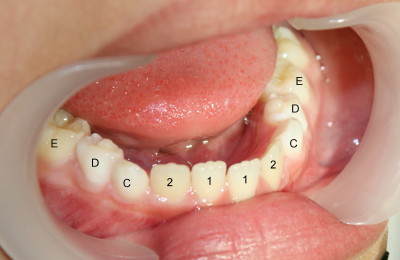
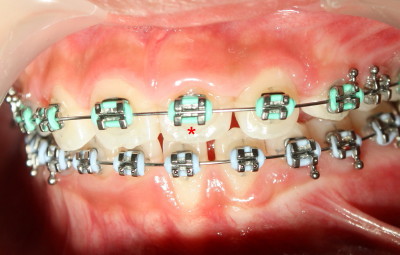
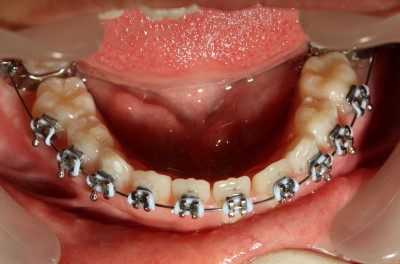
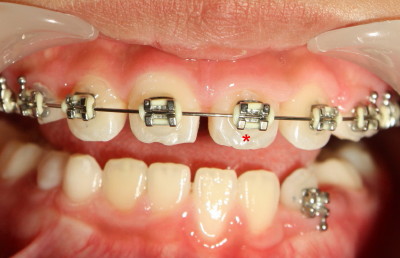
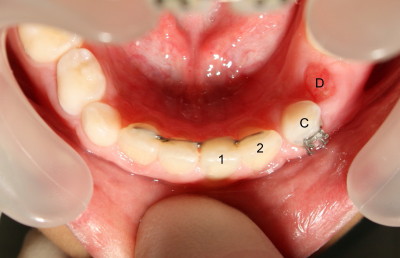
|
|
 |
| Fig.1 | Fig.2 |
 |
 |
| Fig.3 | Fig.4 |
 |
 |
| Fig.5 | Fig.6 |
Dental Education Lecture: Why Early Braces?
Eight year old Jeff needs early braces because one of upper front teeth is in cross bite (inside lower front teeth, * in Fig.1). In one month, the cross bite is fixed (* in Fig.3). When we placed wires (arrowheads) in braces a month ago, they were kinked and bent (arrowheads in Fig.1). In one month, the wires return to their original nice, straight, and smooth shapes (Fig.3 as compared to Fig.1 arrowheads) due to their memory and bring teeth in normal position.
Why in rush? Let us turn to Fig.2, which shows that before braces four of lower adult front teeth are crooked (labeled as 1,2). However the baby back teeth (C,D,E) are in good alignment. We need to use them as anchorage (relatively fixed points) to move the front teeth into right position as well as with the help of wire. Also in one month, the bottom front teeth are in pretty good shape (Fig.4).
As we are aware, baby teeth will be wiggling in due time. Once baby teeth become loose, we are losing anchorage and cannot move the teeth exactly where we wish to move to if the case is more complicated than Jeff's.
In fact, three months into treatment for Jeff, the lower left baby teeth (Fig.6: C, D) start to wiggle. We have to terminate braces for the lower and begin retention. A fixed retainer is installed with wire and white filling behind the front teeth (1,2). Fig.5,6 are taken five months into treatment. Upper braces are being refined (Fig.5), while a baby tooth is gone (E in Fig.6).
In all, we should catch right timing to do braces. The only way to do so is bring kids to dental office on regular basis. Let doctor decide when is the right time to catch train. After braces are done, we must wear retainers as instructed. Otherwise, undesirable things will happen.
Xin Wei, DDS, PhD, MS 1st edition 12/11/2010, last revision 04/12/2011